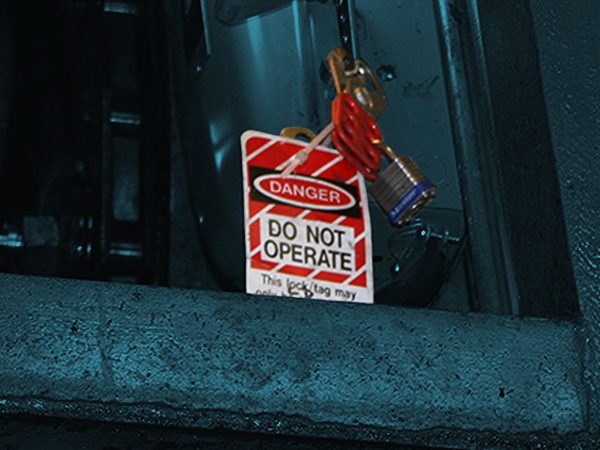
Lockout/Tagout (LOTO) Isn’t Just About Electrical Safety
Let us paint a picture for you. You’re on the jobsite, focused on your task. It might be installing a new drive system, or simply performing some routine elevator maintenance. Beneath the humming of machinery and the clash of tools, there’s a hidden danger that must be remembered: mechanical stored energy. Just like electrical hazards that will shock those they come in contact with, mechanical stored energy is a silent threat with the potential to cause serious harm and is often underestimated.
This is where Lockout/Tagout (LOTO) comes in. Though usually associated with electrical safety, LOTO procedures are crucial for mitigating the risks posed by both electrical and mechanical energy sources. Elevator industry professionals will know that by strictly adhering to LOTO protocols, they can create a secure work environment that will minimize the risk of workplace injuries and fatalities.
Why Focus on Mechanical Energy in LOTO?
An immediate jolt of electricity can often be a pretty clear signal that there is energy stored within the elevator system being worked on. When mechanical stored energy is present, however, there is no such warning signal. Mechanical energy can be a deceptive foe, hiding in various components and waiting to be unleashed. Massive counterweights, for example, can cause serious harm if they move unexpectedly.
Similarly, tensioned systems, such as belts, ropes, and chains, store significant energy when they come under pressure. A sudden release of this energy could turn these systems into dangerous whips or snapping projectiles. Even the more innocuous elements, such as springs, can pack quite the punch and propel objects with force.
The Benefits of LOTO for Mechanical Hazards
Implementing a thorough LOTO process for mechanical (as well as electrical) energy isn’t just about safety; it provides elevator professionals with a series of benefits. To begin, LOTO procedures are proverbial safety shields that prevent the accidental transfer of energy during maintenance and repairs. This greatly reduces the risk of workers being struck by rogue components or getting caught in a suddenly pressurized system.
Beyond the obvious safety benefits, LOTO fosters a culture of clear communication and coordination among team members. The process necessitates clear instructions to ensure everyone is aware of the work being carried out and the specific hazards involved throughout. Clear communication promotes an inherently safer work environment for all.
To some, LOTO may be seen as an initial time investment, but in reality, the opposite is true. By preventing costly downtime caused by accidents and injuries, LOTO actually saves time. Prioritizing safety is not just a logical choice for worker well-being, it’s also a way to create a streamlined and efficient work environment.
Effective LOTO Procedures for Mechanical Energy
As mentioned, LOTO procedures can address both electrical and mechanical hazards during elevator work, but these procedures begin before any actual tasks are carried out. Before beginning a repair job, a full inspection of the mechanical risks takes place. After this, the specific lockout devices are gathered, and a plan is put in place to isolate these hazards.
Next, the entire system is de-energized, and the mechanical components are secured using lockout tools. Once isolated and verified, the components are tagged to ensure clear communication. Now that the system is safe, maintenance work can begin. Finally, once the repair or maintenance is complete, everything is restored in reverse order, and the job is complete with a final system check.
Training is Key in Elevator Construction
It should be clear by now that LOTO procedures are vital in creating a safe work environment for elevator professionals. As with most learned skills, a lot depends on the quality of education and training that the worker has received. NEIEP’s comprehensive education and safety training provides Apprentices and Mechanics with the skills they need to identify mechanical hazards and select and utilize the correct lockout devices.
NEIEP’s in-depth training goes beyond basic procedures and delves into the more minute aspects of a thorough LOTO procedure, such as the selection of appropriate tags, the crucial steps for verifying isolation, and the importance of clear communication throughout the process.
Choosing companies that employ professionals who have invested in NEIEP’s high-quality elevator training will help project managers deliver safer working environments and reduce the risk of accidents and injuries while on the job.
